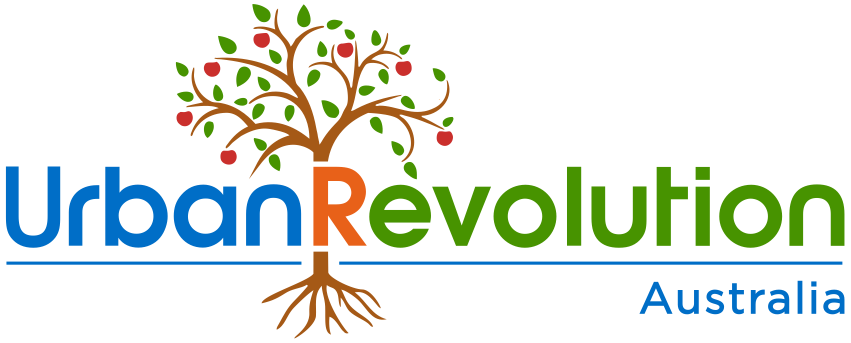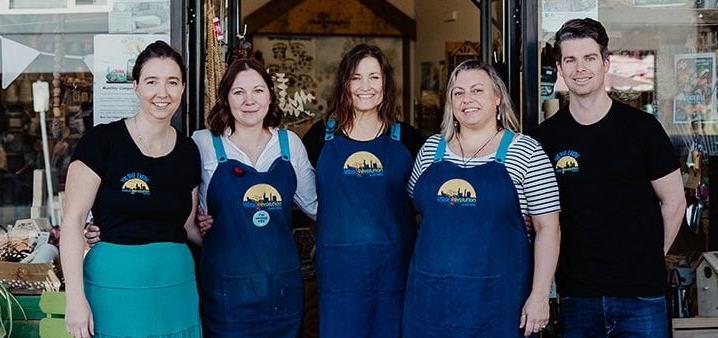From April onwards, you may notice the olives starting to become ripe on trees around Vic Park and the wider Perth area. While some people make use of their olives, many suburban olive trees often go unharvested and the fruit goes to waste. This year there’s a push to put Vic Park’s under-utilised olives to use. But first, let’s take a quick dive into all things olive.

The olive harvest gets underway in Perth in April.
Photo credit: Joni Sercombe
How did Olives Arrive in Western Australia?
Olives are one of the many contributions immigrants have made to Australia. Perth's Mediterranean climate provides the perfect environment for these trees to thrive.
It is believed the oldest olive tree in Western Australia is in the grounds of Government House and was planted in 1831 by Captain James Mangles, who brought with him four olive varieties from Lebrija near Cadiz in Spain. Word has it that a local Vic Park olive enthusiast has several olive trees which were grown from cuttings of that first tree.
Some of the oldest remaining olive groves in Western Australia were planted in 1846 by two Spanish monks of the Benedictine order, Dom Salvado and Jose Serra. Olives are still harvested at these sites at MercyCare in Wembley and the Benedictine monastery in New Norcia.
Subsequent waves of European migrants brought with them all kinds of fruiting trees, including olives, which they used in their market gardens. Over many decades, these communities maintained their cultural traditions of the harvest and processing of olives.

The health benefits of olive oil are widely known
Since the 1990s, as the health benefits of olive oil have become more evident, there has been a concerted growth of the olive industry in WA, with significant investment in olive groves in recent years.
When and How to Harvest Olives
Olive harvesting generally takes place from mid-autumn to early winter. Olives typically start as green olives and get darker as they become riper. Ripe olives are black or dark purple. For pressing into oil, a good time to pick is when the tree has half black and half green olives.
Tips for DIY Olive Harvesting:
- Spread a shade sail, tarp or drop sheets underneath the tree. Olives can bounce and roll quite far so you need to either have a lot of material or hold up the edges to catch wayward olives. Overlap your sheets so olives don’t fall between them.
- Depending on ripeness of olives; you can shake the tree, use a plastic garden rake, or often the easiest method, rake your hands downwards through the branch. You can protect your hands from scratches with garden gloves. If you are harvesting a lot of trees it may be worth borrowing an electric air rake and compressor, which can speed up the harvest significantly.
- Use crates which have small holes which will enable the olives to breathe and stop them sweating and beginning to break down. If you will be pressing or preserving soon after harvesting, any bucket or container will do.
- Pick out any twigs/branches and leaves that may have fallen into your container.
While olives are technically edible straight from the tree, they are intensely bitter. Olives contain oleuropein and phenolic compounds, which must be removed or, at least, reduced to make the olive palatable. To do this, you can press olives into oil or you can cure them in salt or brine.
How to Press Olives to Make Olive Oil
Pressing is best done as soon as possible after picking. There are many methods to manually press olive oil. There are any number of home-made contraptions to crush the pits, separate the oil from the pulp etc. Many of these are very labour intensive and yield only a little oil. Mechanical pressing using centrifuge is much more efficient. There are a number of professional presses in WA which will press a batch of olives for a small fee.
Olive oil is bright fluorescent green when it comes out of the press, but later settles into a darker colour. You’ll need to let it sit for about a month to let the sediment settle before you decant it into bottles. Olive oil keeps better if stored in the dark.
How to Preserve Olives
Olives can be preserved by packing them in salt, or saltwater (many migrants swear by seawater). This draws out the bitterness, before other flavours are added. There are variations in the preserving technique and many recipes which vary from culture to culture.
A variety of different flavours can be added to preserved olives.
Photo credit: Joni Sercombe
Health Benefits of Olives
Olives form one of the key components of the incredibly healthy Mediterranean diet. They are high in vitamin E and other powerful antioxidants, with health benefits ranging from fighting inflammation to reducing microorganism growth. Studies show that they are good for the heart and may protect against chronic illnesses such as heart disease and osteoporosis.
Olive oil is increasingly used to make hair and body products, including soap. The famous Aleppo soap, made in Syria uses just olive oil and lye and is cured for up to a year before using.
Vic Park Community Harvest
Today, olive trees can be found on the verges in most suburbs. However the tradition of the local harvest has largely been lost and much of the fruit now goes to waste. Many Vic Park locals have been harvesting and pressing/preserving their own olives. However there are many trees where the fruit is wasted. A local Vic Park farmer Alana (@project__76)has decided to bring back the social collective harvest and put our local olive trees to use.
The Vic Park harvest and olive press takes place in April/May. All the olives collected will be pressed together in a single press. If this sounds like your kind of thing, there are a few ways to get involved:
You can list your tree, or you can participate in the harvest as part of a crew. All participants in the harvest will receive a small bottle of Vic Park oil as a thank you, but if you want larger quantities of olive oil, you can also purchase some olive oil. Olive oil sales will go back into the costs of processing and bottling.








Stuart
June 20, 2023
Tranby has older olives from South Africa. Or Gov. House olives are older than stated.